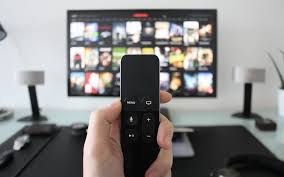In recent years, the landscape of television broadcasting iptv france has undergone a profound transformation, largely driven by the advent of Internet Protocol Television, commonly known as IPTV. This technology represents a significant departure from traditional broadcasting methods, offering viewers a more interactive and personalized experience.
What is IPTV?
IPTV utilizes Internet Protocol (IP) networks to deliver television content, as opposed to the traditional methods such as satellite, cable, or terrestrial broadcasts. This allows users to stream media content over an internet connection, providing them with greater flexibility in how and when they consume their favorite shows, movies, and sports events.
How IPTV Works
The core principle of IPTV involves the transmission of television content through IP networks, typically managed by service providers. Here’s a simplified breakdown of how IPTV works:
- Content Acquisition: Television broadcasters or content providers encode their content into IP format and transmit it to the IPTV service provider.
- Content Management: The IPTV service provider manages and stores the content on its servers, organizing it into packages or channels.
- User Access: Subscribers access IPTV services through a set-top box provided by the service provider or through compatible devices such as smart TVs, computers, or mobile devices.
- Content Delivery: Upon user request, the content is delivered in real-time or on-demand over the internet connection, enabling viewers to watch programs at their convenience.
Key Features of IPTV
- Interactive Services: IPTV enables interactive features such as video-on-demand (VOD), time-shifted media playback, and interactive advertising, enhancing user engagement.
- Personalization: Subscribers can customize their viewing experience by selecting channels or content packages tailored to their preferences.
- High Definition Quality: IPTV supports high-definition (HD) and even ultra-high-definition (UHD) video streams, providing superior image and audio quality compared to traditional broadcasting methods.
- Multi-screen Viewing: Users can access IPTV services on multiple devices simultaneously, allowing for greater flexibility in where and how they watch TV.
IPTV vs. Traditional TV Broadcasting
- Flexibility: IPTV offers on-demand access to content, whereas traditional TV relies on scheduled broadcasts.
- Content Variety: IPTV providers can offer a wider range of channels and content packages compared to traditional broadcasters limited by bandwidth constraints.
- Cost and Efficiency: IPTV can be more cost-effective for providers and consumers alike, eliminating the need for costly infrastructure associated with traditional broadcasting methods.
Challenges and Considerations
While IPTV presents numerous benefits, it also faces challenges such as:
- Bandwidth Requirements: Streaming high-quality content requires substantial bandwidth, which may pose challenges in regions with limited internet infrastructure.
- Content Licensing: Securing rights for content distribution across different regions can be complex and costly for IPTV providers.
- Regulatory Compliance: IPTV services must comply with local regulations governing broadcasting and content distribution.
The Future of IPTV
As internet connectivity continues to improve globally, IPTV is expected to grow in popularity. Innovations in streaming technology, including advances in compression and network optimization, will further enhance the IPTV viewing experience. Additionally, the integration of artificial intelligence (AI) and machine learning could personalize content recommendations and improve service quality.
In conclusion, IPTV represents a significant evolution in television broadcasting, offering viewers unprecedented control over their viewing experience. While challenges remain, the advantages of IPTV in terms of flexibility, quality, and interactivity position it as a formidable competitor to traditional broadcasting methods, shaping the future of how we consume television content.

